PRESIDENT MUSEVENI DELIVERS STATE OF NATION ADRESS 2018
www.mknewlink.com
On Wednesday, June 6, President Museveni delivered the 2018 state of nation address. We reproduce it in full below.
Since the last State of Nation Address, a number of Ugandans, including Former Ministers, Members of Parliament and Seniors Personalities, most of whom had contributed greatly to the development of our country, have departed from this world. Among others we remember the following;
1. The late Hon. John Ssebaana Kizito, former Minister and Member of Parliament for Makindye.
2. The late Hon. Grace Hailat Kaudha Magumba, former District Woman Representative, Iganga district.
• The late Hon. Maj. Edward Rurangaranga, former Deputy Minister and Member of Parliament for Bushenyi West.
1. The late Hon. Maria Lubega Mutagamba, former Minister and Woman Member Parliament for Rakai.
2. The late Mr. Sam Frobisher Owori, President Elect – Rotary International (2018-2019).
3. The Late Hon. Lady Justice Laetitia Eulalia Mary Mukasa Kikonyogo, former Deputy Chief Justice.
• The Late Hon. Beijukye William Zinkuratiire, former Member of Parliament for Ruhaama County.
• The late Mzee Kham Karekaho Karegyesa, former Deputy Minister of Animal Industry. Game and Fisheries (1962-1971), Member of Parliament for Rujumbura (1980-1986).
1. The late Mzee Adoko Nekyon, former Minister of Information, Broadcasting and Tourism (1962), – former Minister of Health (1988) – former Minister of Rehabilitation and Social Services (1990).
2. Ugandans who were murdered by criminals.
I extend condolences to their families and to the entire country. Let us observe a moment of silence in their memory. May their souls rest in Eternal Peace
ACCOLADES
I wish to recognise and congratulate the sports people who made Uganda proud on the International sports scene;
2017. David Emong for winning a Gold Medal in the 1500m T46 event at the World Para-athletics Championships, held in London on 15th July, 2017.
2018. Joshua Kiprui Cheptegei who won a Gold Medal in the 5,000 final of the 2018 Gold Coast Commonwealth Games in Australia and other participants who represented us in the Commonwealth games.
• Stella Chesang who won a Gold Medal in the Women’s 10000 metres.
1. Munyo Mutai who won a Silver Medal in the Men’s marathon
2. Mercyline Chelangat who won a Bronze Medal in the Women’s 10000metres and
3. Juma Miiro who won a Bronze Medal in the Men’s 49kg boxing.
Madam Speaker, through you, I also wish to recognize a team of medical experts comprising of Dr. Omagino John, Dr. Manyilirah William, Dr. Mwambu Tom, Dr. Mujumbi Cephas, Dr. Ejoku Joseph, Dr. Ssemogerere Lameck, Ms. Mundur Gertrude, Ms. Ann Oketayot and Ms. Muraa of the Uganda Heart Institute for successfully performing the first ever Coronary Bypass Surgery in Uganda.
Let me also take this opportunity to recognize Ms. Philipa Makobore, a Scientist at Uganda Industrial Research Institute, who led a team that designed an Electronically Controlled Gravity Feed Infusion set (a medical device) that won a second prize at the 2017 Africa Innovation Foundation.
SECURITY
Madam Speaker, on this occasion of the State of the Nation address, I wish to emphasize that the NRM Government is fully committed to ensuring a secure and peaceful Uganda by promoting and upholding security, democracy and good governance as core values for social transformation.
In the past year, the UPDF ensured that the borders remained secure. We contributed to regional stability by enhancing corporation with Defence Forces in the Region. The situation in South Sudan is slowly improving under the IGAD and the AU frameworks although the continued high influx of refugees puts a strain on national resources. The conflict has continued to affect our strategic security and economic interests.
We have continued to destroy the Allied Democratic Forces (ADF) terrorists to ensure security in Uganda. In December 2017, the ADF attacked Tanzania UN Peace Keepers under MONUSCO in Congo.
The UPDF made a pre-emptive strike in collaboration with the Armed Forces of the DR Congo to destroy ADF camps in Erengeti Triangle –North Kivu Province.
The UPDF is maintaining active defensive operations along the border with the Democratic Republic of Congo (DRC) in the Districts of Kasese, Bundibugyo and Ntoroko to deter any ADF terrorists from sneaking into Uganda.
The UPDF completed its withdrawal from the Central African Republic in August 2017 since the Lords Republic Army (LRA) had been significantly degraded into a very weak force.
The operations were handed over to the Central African Republic Forces and UN Multi-Dimensional Integrated Stabilization Mission in the Central African Republic (MINUSCA).
The LRA is not expected to reorganize and rebuild its capacities to cause further havoc. Nonetheless, we will continue monitoring the situation.
Our participation in AMISON has continued to pacify Somalia. Challenges, however, still remain especially in line with the UN Resolution 2372 which ordered an AMISOM troop draw down without corresponding development of the Somali National Security Forces.
The Troop Contributing Countries would like this Resolution reviewed to enable AMISOM have enough troops to continue with the pacification process while at the same time building the Somali Army to effectively take over and preserve the gains of AMISOM.
As far as Internal Security is concerned, the Country recently witnessed the murders in Entebbe, Nansana, house attacks in Masaka, the kidnap and brutal murder of Susan Magara, and many others.
Like I said last year, we need to beef up the Police with better equipment to help in the investigations. The process of getting cameras is at procurement level.
They will eventually be procured and installed in the coming financial year. We also need to improve on forensic investigations by using the bio data NIRA has.
One should be able to take finger prints of the criminal from the scene of crime and compare it with the bio-data under NIRA to enable Police know who was involved in the criminal act. The Police can then announce that it is looking for so and so based on scientific evidence.
We will invest in whatever is required to ensure that forensic and other forms of scientific investigations improve. I have also directed Uganda Communication Commission (UCC) to ensure that the Telecom Companies don’t sell a sim card without taking particulars of the buyer which should be corroborated with the buyers’ particulars with NIRA.
Also, no unregistered sim card should be in operation. If any unregistered sim card is found being used the Telecoms will be penalised.
Furthermore, we will continue to professionalize the Police through continued training of its personnel. I have tasked the new Police leadership to ensure that they weed out the bad elements within the Force and to continue building a pro-people Force supported by community policing. The Crime Preventers will be under the Uganda People’s Defence Forces (UPDF).
They will be regarded as a Reserve Force for the UPDF. My idea is to have a small Army which is equipped but with a big reserve. Additionally, apart from preventing crime, Crime Preventers must be exemplary actors in poverty eradication in their homes and communities.
I want to assure Ugandans and all residents in Uganda plus our visitors and tourists, that Uganda is secure and a good place to be.
I also urge the community to always be on the alert and report to police and other security organs of the State, any suspicious characters within the neighbourhoods.
JUSTICE
Linked to the above is the prosecution and the trial of cases. We need to ensure that investigations don’t take so long so that justice is dispensed in time instead of having adjustments on account of investigations.
I also call upon lawyers on both sides to avoid unnecessary adjournments. The country needs expeditious trials.
On the side of civil cases which don’t require a lot of investigations, I expect them to take lesser time. Delays in civil trials affect businesses negatively.
Madam Speaker, in my continued support to the Judiciary, recently, I appointed 10 more judges of the High Court, 4 Justices of the Court of Appeal, and 2 Justices of the Supreme Court.
It is high time the judges are judged by the number of cases they have disposed of in a given period. I am happy to note that the Judicial Service Commission in the last one year dealt with 291 cases on complaints received from the public on corrupt judicial officers.
We should eliminate corruption within the judiciary for the citizens to have confidence in the Judicial System.
INFRASTRUCTURE FOR TRANSFORMATION
As you all know, the Mission of the NRM is to transform Uganda. In order to achieve this transformation, we prioritized investment in infrastructure; the roads, railway, ICT, power generation and transmission and Operation Wealth Creation.
These are to lay a foundation for the economic transition of the country. A good transport infrastructure is essential for industrialization, tourism and provision of social services. Besides, investment in infrastructure also creates jobs.
We are now emphasizing local content in the infrastructure projects we are investing in.
Ugandans should also look at these government investments; the Pipeline, the Oil Refinery, the Standard Gauge Railway (SGR), Roads, Airports, Power Dams and Transmission Lines as opportunities for them to make money and in the process create more jobs.
Where local labor and inputs are available we should ensure that these are sourced. The line Ministries and other Government Departments should always make sure that no foreign labor is engaged where we have local capacity, and for the inputs, we shouldn’t import what is available locally.
If it is a question of quality, we should ensure that local establishments are helped to upgrade and reach the desired quality standard.
The local business associations like Uganda Manufacturer’s Association, Private Sector Foundation and Uganda Chamber of Commerce should organize their members to take advantage of the big infrastructural projects we are investing in. I will be meeting these Associations quarterly so that I get to know their challenges directly in case the line Government Departments don’t assist them.
5.2 Roads
Achievements made include the following;
5.2.1. Road Upgrading/Construction
Government is currently upgrading 20 Road Projects covering a total distance of 1,301Km. This year, 7 Road Projects have been largely completed, adding 423km to the paved road stock. These are:
1. Mukono-Kyetume-Katosi/Nyenga (74km);
2. Gulu-Acholibur (77.7km);
• Acholibur-Kitgum-Musingo (86.4km);
1. Kanoni-Sembabule Villa Maria (110km);
2. Kampala-Entebbe Expressway (49.56km);
3. Mbarara Bypass (14km); and
• Rushere-Nshwerenkye (11.1km);
5.2.2 Road Rehabilitation
Rehabilitation is ongoing of 637km of the paved national roads that have reached their service life. This Financial Year, 3 road rehabilitation projects have been completed totaling 172km.These are:
1. Iganga-Kaliro (32km);
2. Nansana –Busunju (47.6km); and
• Mukono-Kayunga-Njeru (92.5km).
Implementation of the following Road Projects commenced this Financial Year
1. Kigumba – Bulima (69km)
2. Mbale-Bubulo-Lwakhakha (44.5km)
• Soroti -Katakwi-Moroto-Lokitonyala (150km)
The following Road Projects were prepared and works contracts procured this Financial Year. Their implementation will begin next Financial Year.
• Atiak – Moyo-Afoji (104km),
• Tirinyi-Pallisa/Pallisa-Kamonkoli Road (93km);
• Muyembe – Nakapiripirit (92km);
• Rwenkunye-Apac-Lira-Puranga (191km)
• Masaka – Bukakata (41km)
• Kapchorwa-Suam (73km)
• Rukungiri-Kihihi-Ishasha/Kanungu (78.5km)
In order to alleviate traffic congestion in Kampala, the following projects will commence in the new Financial Year;
• Busega-Mpigi Expressway
• Kampala-Jinja Expressway under a Public Private Perternship (PPP)
• Kampala-Flyover
Oil Roads
The Government of Uganda and its Partners through the Lake Albert Basin Development Committee (LABDC) set a target to start the production of oil by 2020.
In order to achieve this target, key enabling infrastructure, such as road network, must be in place. In January 2017, Government made a decision to commence the urgent procurement of contractors to design and build 693km of roads in the Oil Region.
The feasibility studies and preliminary designs with Project Cost Estimates, the Environmental Social Impact Assessment and the Resettlement Action Plan were completed this year.
Land Acquisition commenced and is progressing well. The status of the procurement of the contracts is as follows:
Civil Works Contracts for construction of the following Oil Roads Projects have been awarded. Construction will begin next Financial Year.
1. Masindi (Kisanja)-Park Junction and Tangi junction-Paraa-Buliisa Roads (159km)
2. Hoima-Butiaba-Wanseko Road (111km)
• Buhimba-Nalweyo-Bulamagi and Bulamagi-Igayaza-Kakumiro roads (93km).
The following Oil Road Projects are still under procurement with implementation expected to commence next FY2018/2019
1. Lusaalira-Nkonge-Lumegere-Ssembabule Roads (97km);
2. Masindi-Biiso, Kabaale-Kizirafumbi and Hohwa-Nyairongo-Kyaruseha Roads (106km)
• Kabwoya-Buhuka and Ntoroko-Karugutu Roads (98km)
District Road Equipment
During the last State of the Nation Address, I informed you that we were in the process of procuring road equipment for distribution to Districts, Zonal Centres, UNRA and KCCA.
I am pleased to inform you that 1,122 pieces out of 1,151 pieces of road equipment have been received and distributed to the Districts, and the process of distribution is still ongoing. Each District will receive the following equipment;
• A grader;
• Water bouser;
• Roller;
• Wheel loader; and,
• 2 tippers
The following equipment will be at the Zonal Centres to be shared out by the District, in a particular Zone. These are;
• A bulldozer;
• Excavator; and;
• A low loader
With this equipment, the condition of the District and the feeder roads should progressively improve. The Ministry of Works and Transport should work out guidelines on costs per km depending on a terrain of the area.
From the money we send to the Districts for road maintenance, we should be able to know how many kilometers of roads is expected to be maintained in a good motorable condition.
You, the Honourable Members of Parliament, should, through your inspection of your Constituencies, follow up works on roads in your respective Districts.
FERRY SERVICES
Government started constuction of a ferry to Sigulu Islands; establishment of ferry serives for Bukungu- Kagwara- Kaberamaido (BKK) and Bunyama and Bubembe; connecting Teso and Busoga areas through lake Kyoga and Bubende to Bugala Islands.
The establishment of second ferry services for Kiyindi-Buvuma and Bubende-Bugala Islands in Kalangala district is intended to support anticipated palm oil growing.
Government is finalising establisment of the Amuru Rhino camp Ferry Route – to be completed in FY 2018/2019.
5.4 Bridge Construction
We are constructing several bridges to improve connectivity of the National Road Network. This year, 5 bridges have been largely completed. These are:
1. 2nd Nile Bridge at Jinja;
2. Manafa Bridge on Tororo-Mbale Road;
• Seretiyo and Nyalit Bridges in Kapchorwa;
1. Aswa Bridge in Lira; and
2. Cido Bridge in Nebbi.
Air Transport
A good air transport system is crucial for promotion of tourism in the country.
Entebbe International Airport
We have invested in the rehabilitation and expansion of Entebbe International Airport. So far, the following have been completed;-
• 30% works for the new Cargo Centre Complex;
• 20% works on the modification of the Passenger Terminal Building;
• 15% rehabilitation works on Apron 1.
Rehabilitation and expansion of Entebbe International Airport will continue in the new Financial Year.
Hoima Airport
On the airport in Hoima, construction works have started. We hope that by the end of the next Financial Year, 50% of the works will have been completed.
National Airline
On the National Airline, feasibility studies and a business plan were completed. Also, a Taskforce comprised of Aviation experts was constituted to spearhead the revival process. Initial payments have been made to secure slots for the Manufacture of aircrafts.
In the next Financial Year, 129 billion Ug Shillings has been put aside for capitalization of the Airline. The above processes will be continued in the new Financial Year. We hope that the revived National Airlines will boost exports and tourism.
5.7. Railway
5.7.1 Standard Gauge Railway (SGR ) Development
The Government of Uganda continues to fast track the development of the Standard Gauge Railway. A total of 1,724Km will be developed in a phased manner starting with the Malaba-Kampala (Eastern Route) SGR Route (273KM). The other routes will be developed later.
On the Meter Gauge Railway, we terminated the Rift Valley Railways and the operations were handed over to Uganda Railways Corporation. Kampala-Portbell is under rehabilitation. A feasibility study for the rehabilitation of the Tororo-Gulu has been carried out.
5.7.2 Progress on the Malaba- Kampala SGR route (273km)
• Preliminary Works (including Bankable Feasibility Studies and Preliminary Engineering) have been completed.
• Sourcing for financing from EXIM Bank of China is in advanced stages. A joint team of Uganda and Kenya is set to meet the EXIM Bank to finalize the pending issues on financing of the Kisumu-Malaba and Malaba-Kampala SGR Section.
• Land acquisition is ongoing using an in-house approach. To date, assessment has been done for 92% of the entire route and 100km of Right of Way have been compensated. The process to acquire the rest of the Right of Way continues.
• Plans to extend electricity to the SGR traction substations are under way.
• SGR harmonization between the Government of Uganda and the Government of Kenya has been undertaken. A Bilateral Agreement on seamless and joint operations of the Mombasa-Kampala SGR Section has been signed between the two Countries.
• National/Local Content mainstreaming is ongoing. A plan has been prepared for at least USD 700m to be spent locally during the construction of the Malaba-Kampala SGR. At least 90% of the workers during construction will be Ugandans
• ELECTRICITY
6.1. Generation
As we are all aware, electricity is a foundation for development. Uganda will never have a deficit in electricity again. We are also working on bringing the cost of power down especially for manufacturers.
Development of power generation infrastructure is progressing well. A total of 20.9 MW was added on the grid from (Rwimi 5.5MW; Tororo 10MW; Lubiliya 5.4MW), and by the end of the FY2018/19, Government will have added on the grid at least 1,000MW of generation capacity from the ongoing projects.
The projects are:
Karuma (600MW), Isimba (183MW), Achwa 2 (41MW), Nyagak III (6.6)MW and other smaller projects. Projects in the pipeline include Kiba (330MW) Achora I (42 MW) and Muzizi (48MW).
6.2. Nuclear Power Development: Eight (8) potential sites for nuclear power plants have been identified in the Districts of Buyende, Kiruhura, Lamwo, Mubende and Nakasongola. We will develop the nuclear power for peaceful purposes.
6.2.1Transmission and distribution network
6.2.2 District Headquarters: Implementation of projects to connect District Headquarters of Kotido and Kaabong is underway while Buvuma District Headquarters is planned for connection in the FY 2018/19. Once these are completed, all District Headquarters will have been connected to the National Grid.
6.2.3 Sub-Counties: A Memorandum Of Understanding was signed with Tbea Ltd (a Chinese company) to connect the remaining Sub-Counties. Implementation is awaiting Loan approval between the Government of Uganda and China Exim Bank.
6.3 Transmission
The target for FY2017/18 is to achieve 2,241kms of Low Voltage lines and 3,909kms of Medium voltage lines by the end of Juneo, 2018.
• Construction is on-going for the following Transmission Lines and associated substations with commissioning expected during the FY 2018/19: Bujagali-Tororo-Lessos, (220kV) 127km line; Mbarara-Mirama line (220kV) 65.55km; Tororo – Opuyo – Lira line (132 kV), 260km; Mbarara – Nkenda line (132 kV),160km, 132 kV; Kawanda – Masaka (220kV), 137km line; Nkenda-Fort Portal –Hoima (220kV) 227km; Karuma-Kawanda (400kV) 254km, Karuma-Lira (132kV) 75km, and Karuma-Olwiyo (400kV) 60km; and Isimba Interconnection (132kV) 40km.
• Other transmission infrastructure projects at the implementation phase are: Industrial Parks and associated substations (Namanve South-Namanve 132kV transmission line 10km; Namanve-Luzira 132kV transmission line 31km; Nalubaale-Namanve 132kV transmission line, Mukono T-off (5km); Nalubaale-Tororo 132kV line; Tembo Steels Ltd T-off (12km); Mutundwe- Entebbe 132kV line; Mirama-Kabale 132kV, 85.3km line;Opuyo- Moroto 160km line; Opuyo Substation Upgrade; Lira-Gulu-Nebbi-Arua 314km line.
• Government is also in the final stages of securing funding for the following transmission infrastructure projects: Kampala Metropolitan Transmission System Project and Masaka-Mbarara 400kV line.
Grid Based Rural Electrification
Works for the following projects are complete; Mayuge-Namayingo, Lumino-Namayingo, Namayingo-Bumeru, Lutolo-Lufudu, Kasambira-
Under the Energy Development and Access Expansion; Seven (7) towns were completed. These are: Ntenjeru-Mpenja, Biafra-Nakusubyaki, Ziba-Namaseke-Nansagazi, Kiwale-Buyiira-Lugonjo-Ntimbe-Bukasa-Kisimbize-Buzzu-Banda-Kalambya-Natyole, Lukonda-Wangege Village, Nansagazi-Ssenyi Landing sites, Aduku-Cawente, Aduku-Nambieso, Aduku-Inomo-Lira-Bala-Aloi-Omoro-Dogapio-Atura, Muhanga- Rwamucucu-Kisiizi-Kyempene with Tee-offs to Rugyeyo via Nyakishenyi.
Madam Speaker, in November, 2017, we launched the Hoima-Tanga Crude Oil Pipeline. This pipeline is not just for the crude oil of Uganda; it can become an East African Pipeline. 6.5 billion barrels of oil have been confirmed in the 40% of the potential area.
Consequently, there will be both the refining of oil in Uganda in order to produce petrol, diesel, aviation fuel and other petro-chemical products such as plastics.
There is also associated gas which we shall use to produce some electricity and, maybe, get some nitrogen to add to our phosphates and potassium to produce the NPK composite fertilizers to support our agriculture.
Uganda needs either good coal or natural gas in order to process our huge and excellent quantities of iron-ore into steel which is crucial for the building of hydro-dams, the railways and high rise buildings.
When we use imported steel, we end-up making our buildings being 3% more expensive on account of just freight (costs of transport). Meanwhile, East Africa spends 1.6 billion dollars importing that steel. This kind of haemorrhage must stop.
SOCIAL TRANSFORMATION
We still have a challenge of transforming the 69% of the Ugandan households that are still in the subsistence economy.
This we will achieve through Operation Wealth Creation (OWC) which we launched in 2013/14 Financial Year, starting with the war veterans in the Luwero Triangle.
When we get these 69% into the money economy, then the process of transformation of Uganda will be complete.
There are other programs that target the poor but are scattered in various departments. These are; the Youth Livelihood Programme which is intended to empower the Youth, the Women Entrepreurneship Programme, Nusaf III and PRDP III.
The purpose of these programs is to uplift our people from poverty by targeting the 69%. We need to ensure that the beneficiaries of one programme don’t also benefit from another. Therefore, their implementation should be coordinated.
Uganda Bureau of Statistics (UBOS), in the recent census, identified these 69% by location in their parishes. The total number of households in Uganda is 7.3 million. Households in agriculture are 6.9 million; out of these, 4.8 million households are in subsistence farming with 114,032 households in commercial agriculture. 2 million households are in other activities other than agriculture.
The Parish with the highest number of households in subsistence (7,059) is Butoole in Kyangwali Sub-County in Hoima District.
The one with the least number of household (1) in subsistence is Nombe 1 in Sanga-Sub-County Kiruhura District. With the identification of the households in subsistence economy, our role will be to target them by assisting them to produce for the market.
Those with land will be given inputs through OWC. Those without land will be advised and assisted to engage in economic activities that don’t require a sizeable land.
We will also target middle class farmers who can employ those without land to work on their farms. In all this, we should sensitise our people against land fragmentation.
You should halt land fragmentation at inheritance and instead form family companies where the children divide shares instead of the physical division of land and assets which render everything uneconomic.
As you notice, with 69% in subsistence production, those in the money economy are only 31% of Ugandans.
When we progressively reduce the number of households in subsistence farming and by doing so increase the 31% who are in the money economy, the GDP and the Per Capita Income of Uganda will increase considerably.
This is linked to poverty reduction. When people are selling something and are earning more than what they have to spend on the basics, then you have a prosperous society with income to spend.
As a result, when the population with disposable income increases, they will spend more on manufactured goods, hence, the existing factories will have a reliable internal market.
This will lead to the existing factories to increase production and by doing so most likely, create more jobs.
Also, when the per capita income of Ugandans increase, this will attract more new factories, in turn, more factories and services with a spending population will increase our tax base, hence, government revenue will increase.
This will result into being self reliant giving us a capacity to spend more on the development of the human resource; education, health, sports, water and sanitation.
Agriculture/Wealth creation
I have been sensitizing Ugandans with land to implement the four acres model by devoting one acre to coffee, the second acre to fruits, the third acre to pasture for zero grazing animals and the fourth acre to food for the family. In order to achieve this, we have been distributing inputs to farmers. Cumulatively, we have distributed the following so far;
Cumulative Distribution of Seedlings for strategic enterprises 2014/15 to 2017-18
Tea 384,735,357
Citrus 38,651,563
Mango 23,496,513
Apples 1,905,662
Cocoa 17,615,757
Coffee 751,000,000
Our efforts are finally paying off. As a result of giving seedlings to farmers over the last 4 years, Tea exports have been steadily increasing as follows; in 2015 we exported 53,000 MT worth 71 million USD, in 2016 we exported 58,000 MT worth 78 million USD and in 2017 we exported 64,000 MT worth 87m USD. On the side of coffee; in 2015 we exported 3.2 million 60 kg bags worth 402 million USD, in 2016 the coffee bags rose to 3.5 million but the earnings dropped to 351 million USD, in 2017, we exported 4.1 million bags earning us 489 million USD. Our plan on coffee is to export the processed coffee instead of the coffee beans.
As you notice, our emphasis is on coffee, tea, cocoa, fruits, as opposed to maize, rice, beans etc. This is because coffee, tea, cocoa, fruits are high value crops. In Kalangala, we introduced Palm Oil. I am told that from one acre of Palm Oil, one can earn about 12m in a year. We are also introducing Palm Oil in Buvuma.
With time, we will also add on some horticultural products that have an export market. I am told that Uganda is currently earning ….. from the export of horticultural crops ie, chili, okra, pepper, fresh bananas, etc. What we need to do is to ensure that the farmers who are producing these crops follow the recommended Good Agricultural Practices (GAP) to take advantage of both the export and the local market. In 2015, the European Union (EU) imported fruits and vegetables worth 19.1 billion Euros. The Ministry of Trade, Industry and Cooperative and that of Agriculture, Animal Industries and Fisheries, should work together to ensure that Uganda increases its fresh foods exports to take advantage of the EU and other markets.
Secondly, we should stop importing foods that can be produced locally. Why, for instance, do we import fresh apples, oranges, mangoes, rice, etc? Statistics from URA show that in 2017, we imported 148,000 tons of rice worth 232 billion shillings (64m US$). We can produce these here. This donation of money to buy food should stop. Rice, however, is not among the high value crops. It needs to be produced on a large scale especially by those who have capacity to add value to it. Recently, I met many Rice Millers who are willing to start growing rice locally for their mills. Through these millers and those already engaged in production of rice, we should be self reliant in rice production. I am also told that factories processing fruit juices are importing pulp from Kenya, India, etc. This must stop.
We should use the newly completed Fruit Factory in Soroti to produce pulp for those in the fruit juice industry. There are also other fruit processing plants like the one in Arua, Nabusanke and Itojo which were set up by Uganda Industrial Research Institute. These should produce pulp needed by the Fruit Juice Industry. The Ministry of Agriculture, Animal Industry & Fisheries through the Agricultural Extension Officers we are recruiting at Sub-county Level, should give us figures of what acreage is under what crop to enable us plan for factories to process the said crops. The Extension Service should also guide farmers on how to improve productivity and to select a combination of enterprises that can earn a daily, periodic and long term income.
We should emphasize good quality and value addition to increase on the export revenue, reduce post-harvest losses (30-40% at House hold level) and incomes to our farmers.
I urge the Uganda business community, who mainly invest in trade of imported goods and in real estate, to start investing in food processing. In the case of pulp, the market is already offered by the companies that make fruit juices. So, the risk is minimal. Ugandans invest in real estate because the risk there is low and consequently, the returns in real estate are low compared to factories. When investors, both local and foreign invest in food processing, that will create jobs, improve incomes of the farmers and government will get revenues from taxes.
On the question of stopping importation of food items that can be grown locally, if it is a question of a variety of a particular crop, then NARO should address its research on ensuring that we get the varieties that are wanted on the market.
7.2. Use of Fertilizers
In order to improve agricultural productivity, we will invest in the use of fertilizers. Government will, in the next financial year, roll out the distribution of fertilizers to farmers engaged in high value crops using an e-voucher system. When our fertilizer factory in Tororo starts production in October 2018, fertilizers will be much cheaper, hence, easily affordable. I urge Ugandan farmers to intensify applying fertilizers in their gardens for better productivity per acre, hence, increased income. Imagine with the use of fertilizers if all we produce increased three times, that alone would be a major leap in household income, exports, etc.
Apart from the small holder farmers, there are also the medium and large scale farmers. These help us in providing jobs to the people in the villages who are under employed on their farms or those without land. These need cheap credit to borrow from and agricultural insurance. This will reduce the risk associated with lending those involved in Agriculture. We will continue with the Agriculture Credit Facility which is operated through Commercial Bank that lend those in Agriculture at 12%. Government provides 50% of the loan requirement and the commercial bank provides the other 50%. I am happy to note that some insurance companies working under the Insurance Regulatory Authority have started agriculture insurance. Government could put in some money under NAADS to help the agricultural insurance scheme. This category also requires tractor hire services and equipment for rent to do bush clearing and construction of dams. NAADS has been giving tractors to farmer cooperatives. This process will be intensified so that those who want tractors for hire can access them easily.
7.3. Fish Farming
The other income generating activity in which we should interest our people is fishing. First, the lakes were getting depleted by the people who were using very destructive fishing methods. I deployed a Force to stop the bad fishing and as a result, the Country has started realizing an increase in fish exports.
Secondly, we should encourage the people who are destroying the wet lands by growing rice to engage in fish farming. At Kawumu, I experimented fish firming. In four fish ponds on half an acre, we were able to earn Shs 64 million in a year. I have already instructed the Ministry of Water and Environment to use the USD 24m that we got from the UN to promote fish farming in the wetlands. We need to protect our environment jealously. The Ministry of Water and Environment should also ensure that our rivers are not silted by the farmers who plant so close to the rivers in breach of the law. They should also promote the use of biogas especially by those who have cattle, pigs, poultry etc.
Irrigation
Irrigation requires a water source and a pump to pump the water to the garden and the pipes. We are working with Makerere University to promote production of solar powered water pumps.
On the water sources, we can first take advantage of the natural water sources like lakes and rivers. Also, our policy on rural water is to have a water source per village.
This could be a borehole, spring well, etc. Our people in the villages can use these village water sources to collect water and irrigate their crops. I demonstrated this in Kawumu by collecting water in a jerrycan on a bicycle.
This can easily be done. I, therefore, direct the Ministry for Water and Environment to intensify the program of a water source per village. Government also has equipment both at the Ministry of Agriculture, Animal Industry and Fisheries and the Ministry of Water and Environment which can be hired by the Private Sector to construct their own valley dams/tanks.
These private dams can be used for both irrigation and the animals. Due to adverse weather conditions that exist in some parts of the country, the Government is in the process of providing simple irrigation services especially small holder farmers as well as labor saving technologies. Construction is ongoing at the the following Irrigation Schemes;
(a)
• Olweny Irrigation Scheme in Lira
• Mubuku II Irrigation Scheme in Kasese
• Doho II in Butaleja
• Rwengaju Irrigation Scheme in Kabarole
• Ngenge Irrigation Scheme in Kween
(b)
Completed construction of 2 small scale solar Irrigation
System in Mbarara and Bugiri Districts and works are
ongoing on 12 sites of Mukono, Lwengo, Rukiga, Mityana,
Oyam, Albetong, Nwoya, Amuria, Ngora, Kamuli,
Bukedea, Iganga, Kaberamaido, Bugiri, Soroti, Katakwi,
Napak, Abim and Kaabong District.
These Schemes, however, should produce strategic crops either for food security, export or for processing.
7.5. Dams
We have carried out the following;
• Construction of 9 valley tanks in Otuke, Apac and Katakwi Districts;
• Construction of 14 windmills powered water supply systems in Karamoja are at 50% completion.
• Construction of Mabira Dam in Mbarara is at 25% completion.
7.6. For the Urban Water, the following have been undertaken ……
8.0. TACKLING URBAN POVERTY
Apart from helping the urban poor people from getting out of poverty, we also have to tackle the urban poor and other issues that affect the people who leave in the towns generally. In this regard, I have piloted training the Kampala girls in the following trades; Tailoring, Baking, Weaving, Shoe-making, Hair-dressing and Catering. Last year, we graduated 668 girls. This year by the end of July we will have graduated 4500 girls and the next enrollment will be about 4000 girls. At graduation, we give each girl a tool kit plus one million shillings to start with. We are going to expand this programme and roll it out to other big towns in the coming years. We are also helping our people in carpentry workshops and in welding in and around Kampala. I have moved along the roads that enter Kampala and met the welders and the carpenters; we are going to assist all these with inputs. The other big sector in Kampala is the garages. These we are going to assist with common user machines and the training of the young people in these garages into better mechanics.
THE TRADERS
I have heard outcries from the traders in Kampala about the exploitation from the Landlords. The traders complain that the Landlords charge them money for the use of toilets, charge them 50,000 – 80,000/= for each bulb per month; while Umeme costs are in a range of 25,000 – 30,000/= per month, some pay rent in dollars, they are not given tenancy agreements, hence, rent is increased at short notice and sometimes evicted at the will of the landlord.
This has also implications of tax avoidance on the part of the Landlords. I don’t see why URA and the Ministry of Finance, Planning and Economic Development do not tackle this issue of tenancy agreements which show how much income the Landlord earns.
The Ministries of KCCA, Trade and Industry and Finance, Planning and Economic Development should resolve the problems enumerated above by December this year.
In other towns, as a way of improving on the work environment, we are constructing markets in the following Municipalities at a cost of 194 billion; Kasese, Mbarara, Masaka, Entebbe-Kitoro, Tororo, Soroti and Arua.
Busega Market in Kampala is also under construction. Sites for Lugazi, Busia and Moroto markets have been handed over to the constructors and procurement for construction of a market in Kitgum is ongoing.
I have directed the Ministries of Local Government and KCCA to rationalise taxation of the informal businesses like taxi operators, markets etc. Many times these groups get exploited.
ATTRACTION OF INVESTORS
As you can see from above, tackling poverty requires a multi dimensional approach. We need to attract more investors both local and foreign. I have already tasked the Ministries of Trade, Industry and Cooperatives, and that of Foreign Affairs to employ commercial diplomacy to attract both investors and tourists to Uganda. We also contracted Public Relations Firms to market Uganda and as a result, tourist arrivals at Entebbe International Airport were …in 2017 compared to 1,322,522 in 2016. When the rehabilitation of the Airport is completed, we should expect more tourists in the Country.
On investments, the Ministry of Trade, Industry and Cooperative together with the Department of Investment under the Ministry of Finance, Planning and Economic Development should come up with detailed feasibility studies on areas of investment in Uganda. These should show the size of the market of a particular product, the investment required and profitability. For instance, if we are looking for an investor in assembling computers, we should have details of all the above. We should then through our Embassies approach investors in particular sectors showing them the studies we have carried out. We can also use these studies to attract our local people who normally invest in real estate which has low returns. Even those in trade could be attracted to factories if we have carried out studies for them. This way, we will create more jobs.
Government through Uganda Development Cooperation (UDC) can also invest in processing or areas that are strategic in the economy.
In this regard, we have invested in Soroti Fruit Factory, Kisoro Tea Factory, Kabale Tea Factory and recently, we bought shares in the new Sugar Factory in Amuru District.
With this new Factory, we have assisted 3,874 households in the out-growers Scheme by opening for them 15,000 acres which are being planted with cane. In the first harvest alone, the Out Growers are expected to earn about 58 billion shillings. In the coming Financial Year, we will provide a Tea Factory in Zombo District.
COMMERCIALISATION OF THE KIIRA ELECTRIC VEHICLE
Government allocated 100 acres of land at the Jinja Industrial and Business Park to provide a home for the Kiira Vehicle Plant.
The roadmap for the Commercialization of the Kiira Electric Vehicle Project will be undertaken in a phased manner as an assembly of vehicles (including electric vehicles) in partnership with reputable vehicle manufacturers. We have approved a Seed Fund of UGX 143.7 Billion over a period of four years starting with UGX 24 Billion in the Financial Year 2018/19.
The above will catalyse investment by small and medium enterprises in the manufacture of vehicle parts, components and autonomy systems; increase demand for the utilization of natural resources such as (260 Million Metric Tons) steel from iron ore deposits ( plastics from oil and gas, batteries from graphite, lithium and cobalt deposits etc. The full-scale plant operation is estimated to create over 2,000 direct jobs and 12,000 indirect jobs.
12.0 INNOVATION FUND INTERVENTIONS
Science and technology, like I have always said, are the primer to society’s evolution. As you may all be aware, Uganda is still largely an agrarian economy, heavily reliant on rudimentary local technology and is a net importer of moderate technology products mainly from Europe, America and East Asia.
Government has invested heavily in the ICT backbone with the core aim of reducing cost of connectivity and at the same time increase efficiency.
The most successful IT system that has been developed out of the Innovation Fund is the Academic Information Management System (AIMS). This system was developed by Ugandans as a solution for Integrated University Management. For the first time, all public universities are admitting students electronically without receiving physical applications. The system is integrated with UNEB which makes it hard for students to submit forged academic documents.
It is also linked with IFMS and commercial banks which give Ministry of Finance and Universities Authorities real time visibility of funds as deposited by students.
Using the Innovation Fund, the following projects were supported; Malaria prevention project, Super Banana Wine Nutrient, Dense Composite Flours for complementary feeding solutions to fight infant malnutrition and Cassava Processing Value Addition. We are also supporting development and production of affordable and appropriate solar irrigation pumps for the rural peasant farmers and the Tear Gas prototype.
The support to the Banana Industry has advanced export of fresh vacuum sealed Matooke, matooke flour and cookies to selected regions in the USA, Europe and Asia. Government will exploit this industry such that Uganda’s position as the second largest producer of bananas in the world is maintained. Research has established that Matooke produces the best starch that is highly sought after by pharmaceutical industries.
The Government is reviving the Sericulture Industry out of silk worms in the different agro-ecological zones of the Country with the intent of producing silk yarn for the textile industry.
13.0 HUMAN RESOURCE DEVELOPMENT
On the development of the human resource, we will continue investing in education, health, provision of water and sports. However, these reap from an increased revenues coming from the activities already mentioned above.
Education
On Education, our line is to increase access to quality education by all. In this regard, we consider the distances our children travel from home to the schools.
It is against this background that the NRM Policy is to have a primary school per Parish, a day secondary school per Sub-County, a technical school per Constituency, but initially start at the District level.
In the Financial Year ending, construction of 54 Primary Schools was started in Ibanda (11) Isingiro (20) Kapchorwa (1) Bukwo (9) Arua (4) and Alebtong (9). Construction is currently at 80% completion. Each of the schools will have 7 classrooms, I administration block, 2 stance latrine and a water tank.
In the same period, three Primary Schools were commissioned. They are Otubo Primary School in Kaberamaido, Bukatira in Nakaseke and Mashongora in Kabarole. Also the relocated Shimon Demonstration School was opened in Kira.
In the new Financial Year, we will complete construction and rehabilitation works in 134 Primary Schools.
Furthermore, on the side of secondary schools, we grant aided 20 Community Schools in Sub-Counties that didn’t have a Government secondary school. This was followed with a recruitment of 420 teachers and 120 non-teaching staff in those schools.
In the next financial year, we will grant-aid 100 Community Secondary Schools. Thus, by end of next financial year, we will have grant-aided 120 Community Schools out of 214 Community Schools ready for grant aiding.
However, there are 385 Sub-Counties without any form of a Secondary school. In the next financial year, we will construct 12 Seed Schools in Sub-Counties that don’t have any form of a secondary school. We will progressively construct more schools in the Sub-Counties without a secondary school, while at the same time grant-aid more Community Schools.
Under BTVET, Construction works were completed at Ahmed Seguya TI, Tororo TI and Kaongi TI. Loro Primary School, formerly a School for the traumatized, is now transformed into part of Gulu School of Clinical Officers.
13.2. Sports
I have already thanked our sportsmen and women who excelled in the recent Commonwealth games in Australia. Government is about to complete construction of the High Altitude Sports Academy in Kapchorwa. This will help us train more Ugandans. I have tasked the Ministry of Education and Sports to identify the sports discipline in which Uganda has a comparative advantage and concentrate on them as opposed to scattering scarce resources everywhere. This way, we will excel and market our Country for tourism through sports.
Health
The health status of the population has been steadily improving. Indeed according to the Uganda Demographic and Health Survey reports, the infant mortality has declined from 54 per 1,000 live births in 2011 to 43 per 1,000 live births in 2016.
Under Five Mortality Rate has significantly reduced from 90 per 1,000 live births in 2011 to 64 per 1,000 live births and Maternal Mortality rate declined from 438 per 100,000 live births in 2011 to 336 per 100,000 live births.
The overall impact of all this has been improvement in life expectancy from 56 years in 2011 to 63.3 years by 2016.
Major Achievements
HIV/AIDS:-
ART coverage increased from 56% in 2015 to 63% in 2017. Currently 940,347 people are on treatment. Regarding Elimination of Mother to Child Transmission (EMCT), the numbers of new infections has been steadily declining for instance from 22,000 in 2012 to 3,400 in 2017.
The Country is implementing Test and Treat Guidelines and all who test positive are put on treatment (ARVs). I thank all our Partners who continue to support us with procurement and supply of ARVs and Test Kits especially Global Fund.
Malaria:-
There was a reduction of the prevalence of malaria from 42% to 19% as per the Malaria Indicator Survey of 2015.
The Government has developed a 5 year Malaria Reduction Strategy from 2015-2020, in which we plan to reduce the malaria prevalence rate to 3% by 2020 through various methods i.e distribution of long lasting insecticide treats mosquito nets, indoor residual spraying.
I applaud Members of the Uganda Parliamentary Forum for Malaria for their initiative to voluntarily join the fight against Malaria, Further more I thank the Donors like USAID that continue to help us in the fight against Malaria.
Health infrastructure:-
It is a policy of the NRM government to put a Health Centre III in every Sub-County and a Health Centre IV in every Constituency. Government is mobilizing funds to upgrade Health Centre IIs or construct Health Centre IIIs in 337 Sub-Counties without Health Centre IIIs and Health Centre IVs in 29 Constituencies without Health Centre IVs.
The following infrastructure investments are ongoing;
• Construction, expansion, rehabilitation and equipping of Mulago National Referral Hospital and its transition into a Super-Specialized Facility expected to restart by 1st July 2018.
• Construction of a 450 bed Specialized Maternal and Neonatal Health Care Unit at Mulago National Referral Hospital has been completed and will be equipped ready to open by 1st July 2018.
• The Uganda Heart Institute (UHI) has newly installed Cardiac Catheterization Facility and a Theatre that can handle at least 1,000 operations/procedures per year when fully operational.
• The Cancer Institute is being expanded and developed into a Centre of Excellence for Cancer Treatment, Training and Research in East Africa. In preparation for this, we are also constructing a Six Chamber Bunker for Linear Accelerators to provide Radiotherapy Services to patients in the East African region. Radiotherapy Service has been restored at the Cancer Institute.
• Construction of a specialized Regional Centre for Pediatric Surgery in Entebbe is ongoing and expected to be completed by end of 2018.
We will continue with the immunization campaigns for our children. I also urge Ugandans to lead healthy life styles which include exercising daily. Families and the local leaders should also fight child marriages which I am told contribute 30% of maternal death.
SALARY INCREMENTS
Government has approved a revised Pay Policy for Public Servants in which salaries of public servants have been increased in a phased approach.
Those to receive an increment starting with FY 2018/19 include: Medical workers, employees designated as Scientists, Science Teachers, Primary School Teachers in lower grades, Head Teachers of Secondary Schools and their Deputies, Principals of Tertiary Institutions and their Deputies, Judicial Officers, Local Government Political Leaders, Sergeants, Corporals and Privates in the Army, Uganda Police Force and Uganda Prison Services. Salaries of other public officers will also be increased in future.
Furthermore, rationalizing of Commissions, Agencies and Authorities, among others, will eliminate duplication, thereby, leading to savings that can be used to increase salaries of Public Officers.
The Ministry of Public Service conducted a nation-wide Pension Census in an attempt to clean up the pension payroll by matching National Identification Numbers and biometric data of pensioners in the payroll. It is anticipated when the exercise is completed, corruption in form of ghost pensioners will be eliminated.
FIGHTING CORRUPTION IN SERVICE DELIVERY
The challenges we are facing in Public Schools is supervision.
While the Ministry of Education and Sports and the Local Government have a duty to ensure that schools are well supervised, the parent, the community and the political leaders too have responsibility to ensure that the teachers teach.
You must have observed that private schools tend to perform well. This is not on the account of better pay and better facilities in private schools. In a majority of cases, the pay in Government schools is much better than in many private schools.
The owners of private schools put in an effort to ensure good performance of their schools. Who is the owner of a Government school? It is the parents, the community, the local public servants like the Parish and Sub-County Chiefs and the elected leaders.
Why should these leaders preside over schools where the teachers are not teaching while we are paying them? So the Local Government, working with the Ministries of Education & Sports and that of Health should ensure good quality education and health services to our people.
The chiefs should report teachers and health workers who don’t do their work.
The Chief Administrative Officers should appraise the Chiefs on performance and service delivery in their Parishes and Sub-counties.
On the side of the Chief Administrative Officer and the RDC, who are appointed by the President, I will not re-appoint CAOs and RDCs in whose district service delivery is wanting.
If the political leaders at various levels supervise implementation of government services in their areas of jurisdiction, we will eliminate corruption in service delivery system.
I thank the role played by Parliament through Accountability Committees of Parliament in the fight against corruption. However, individually you should follow up projects in your Constituencies to ensure that they are implemented corruption free.
As you are aware, we have not elected Local Council Leaders at the village (LC1) for a long time. These elections need however take place in the New Year.
The LCI leaders should help in supervising some delivery in their villages. They should also mobilise the community to feed their children in schools.
UGANDANS IN THE DIASPORA
Our Community in the Diaspora continues to remit funds to Uganda.
When I attended the Uganda North America Convention in Seattle, Washington State, USA in 2004, Ugandans in Diaspora requested for dual citizenship as many of them had become citizens of their host countries, thus having lost Ugandan citizenship.
When I came back, I convinced the political leadership and the Constitution was amended in 2005 to provide for dual citizenship and subsequently an Act of Parliament was enacted to that effect. However, I have been receiving complaints that the process of getting dual citizenship by our sons and daughters is tedious. They are treated like other foreigners seeking to become Ugandans.
We should know that these are our people who became citizens of other Countries by convenience or their children became citizens of those Countries by birth. These people have their clans, tribes, relatives here.
We should therefore ease the process of acquiring their lost citizenship again. For instance, they should be able to apply on line and pay on line without having to fly in here. The fee of USD 400 per person for application could also be revised downwards considering that many of them have many children who too want Ugandan citizenship.
The Imigration Department should also have a special desk at the airport that handles Ugandans in the Diaspora instead of them lining up with other foreigners.
It is my pleasure to declare the 3rd session of the 10th Parliament open.
I thank you very much and hope that the coming session will be fruitful.
Source: www.mknewslink.com; a western Uganda news website.
Email: wmuhwezi75@gmail.com
Tel:+256702680106.














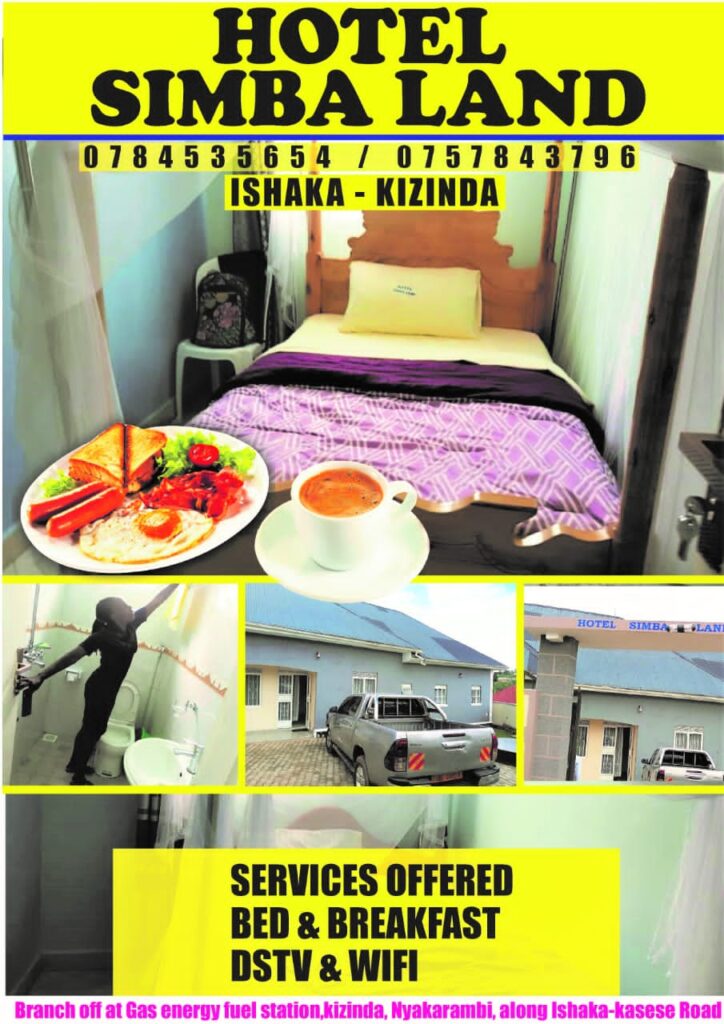


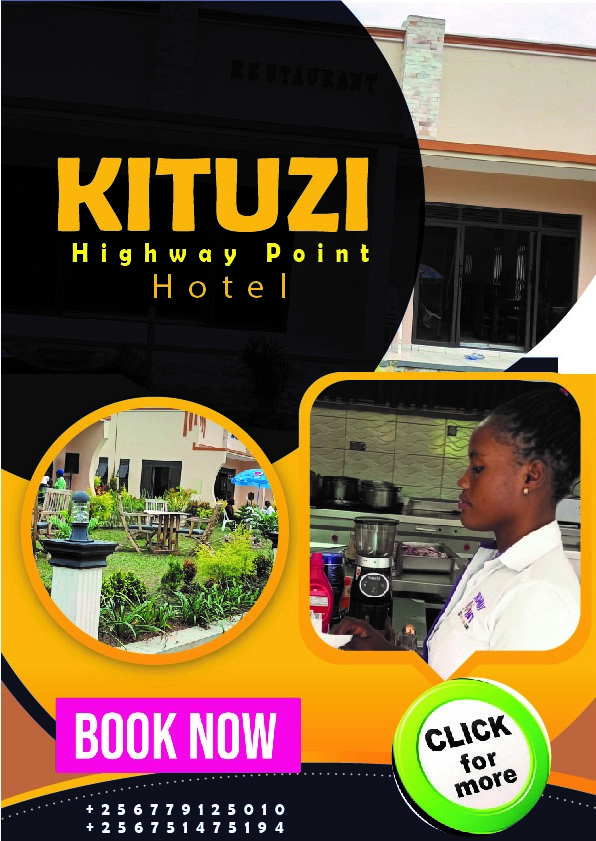

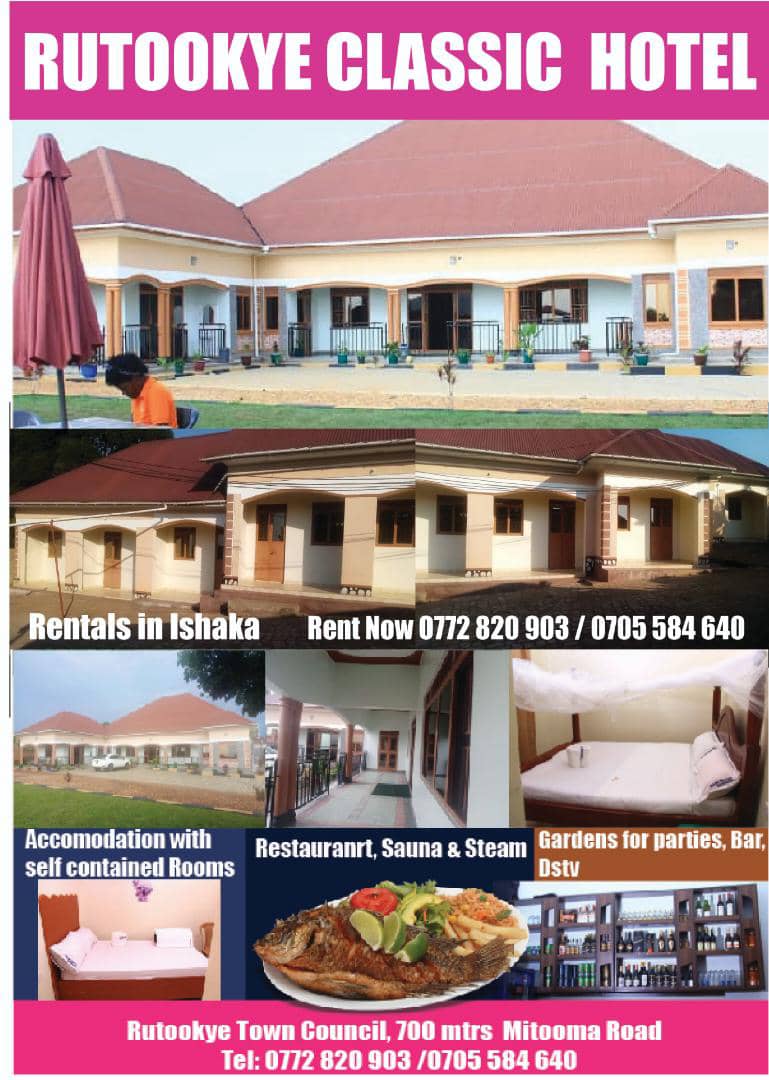
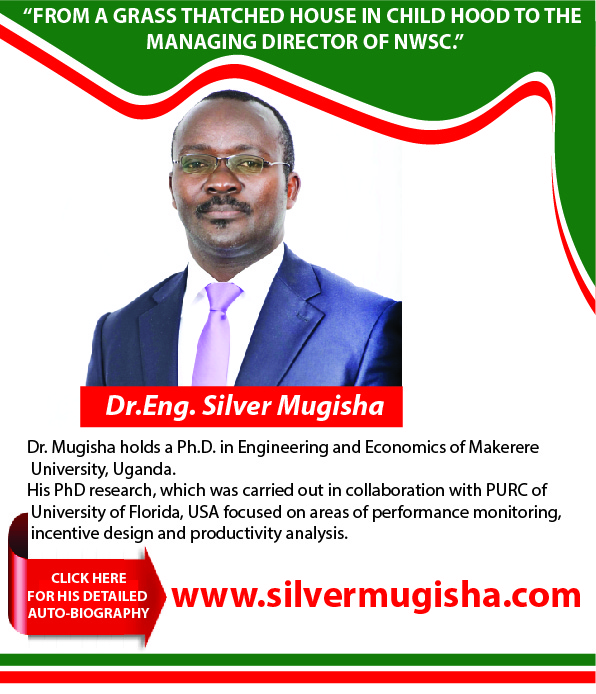

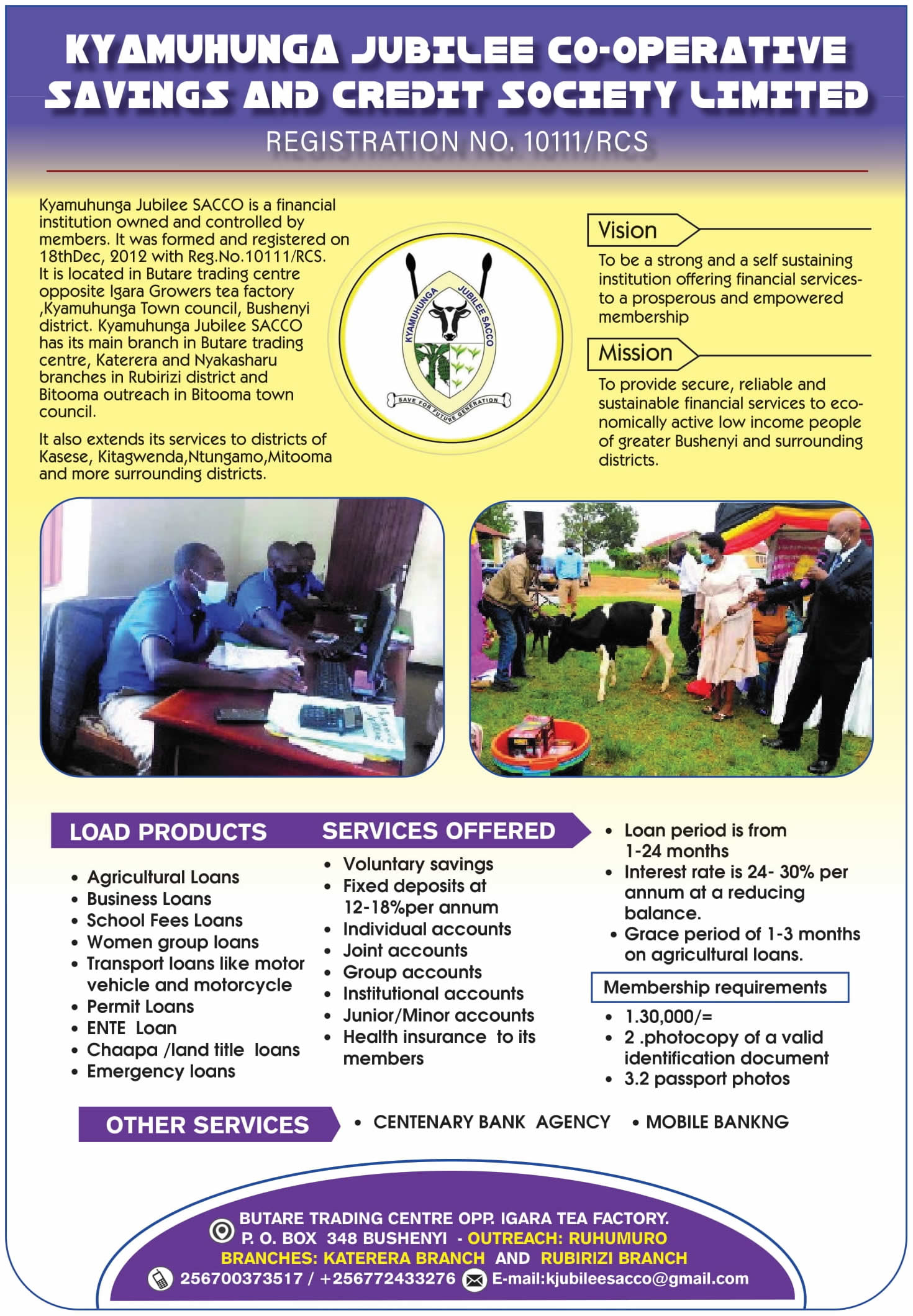

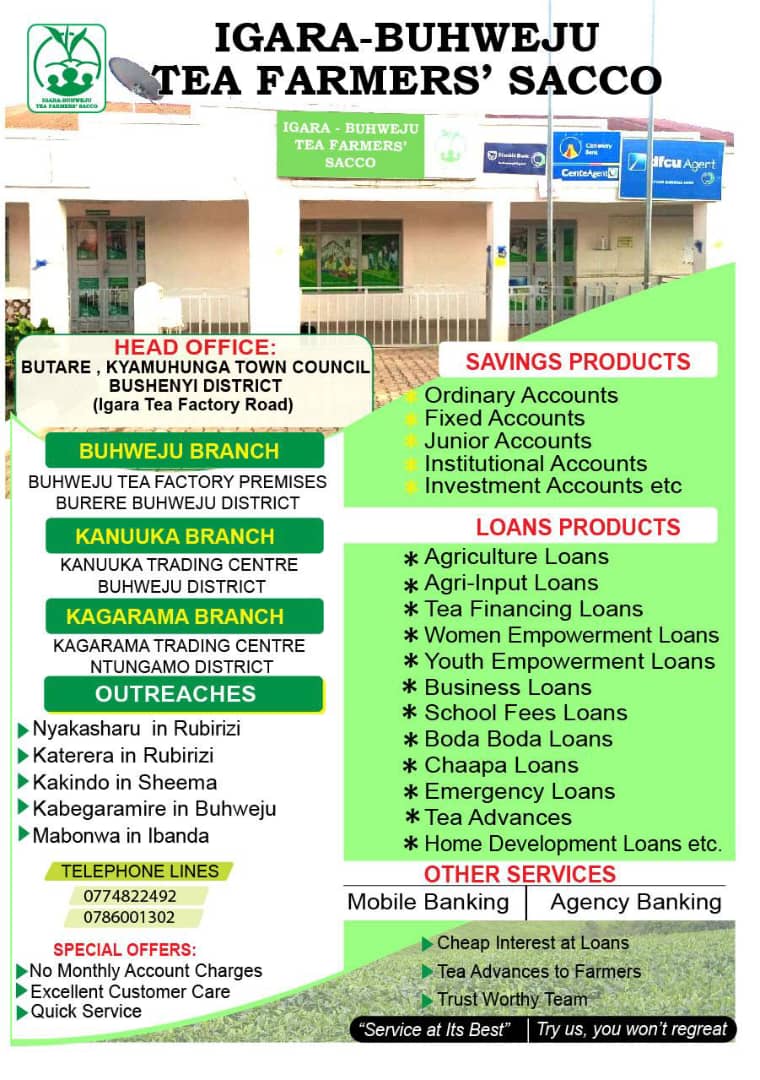




 Views Today : 562
Views Today : 562 Views Yesterday : 745
Views Yesterday : 745 Views Last 7 days : 3189
Views Last 7 days : 3189 Views This Month : 9450
Views This Month : 9450 Total views : 1434133
Total views : 1434133 Who's Online : 0
Who's Online : 0 Your IP Address : 18.188.113.189
Your IP Address : 18.188.113.189